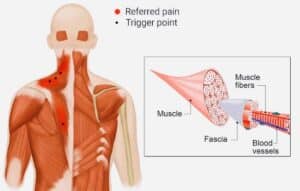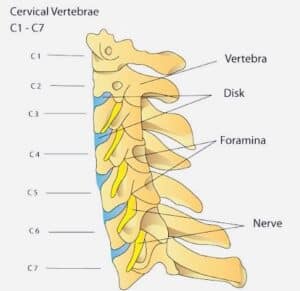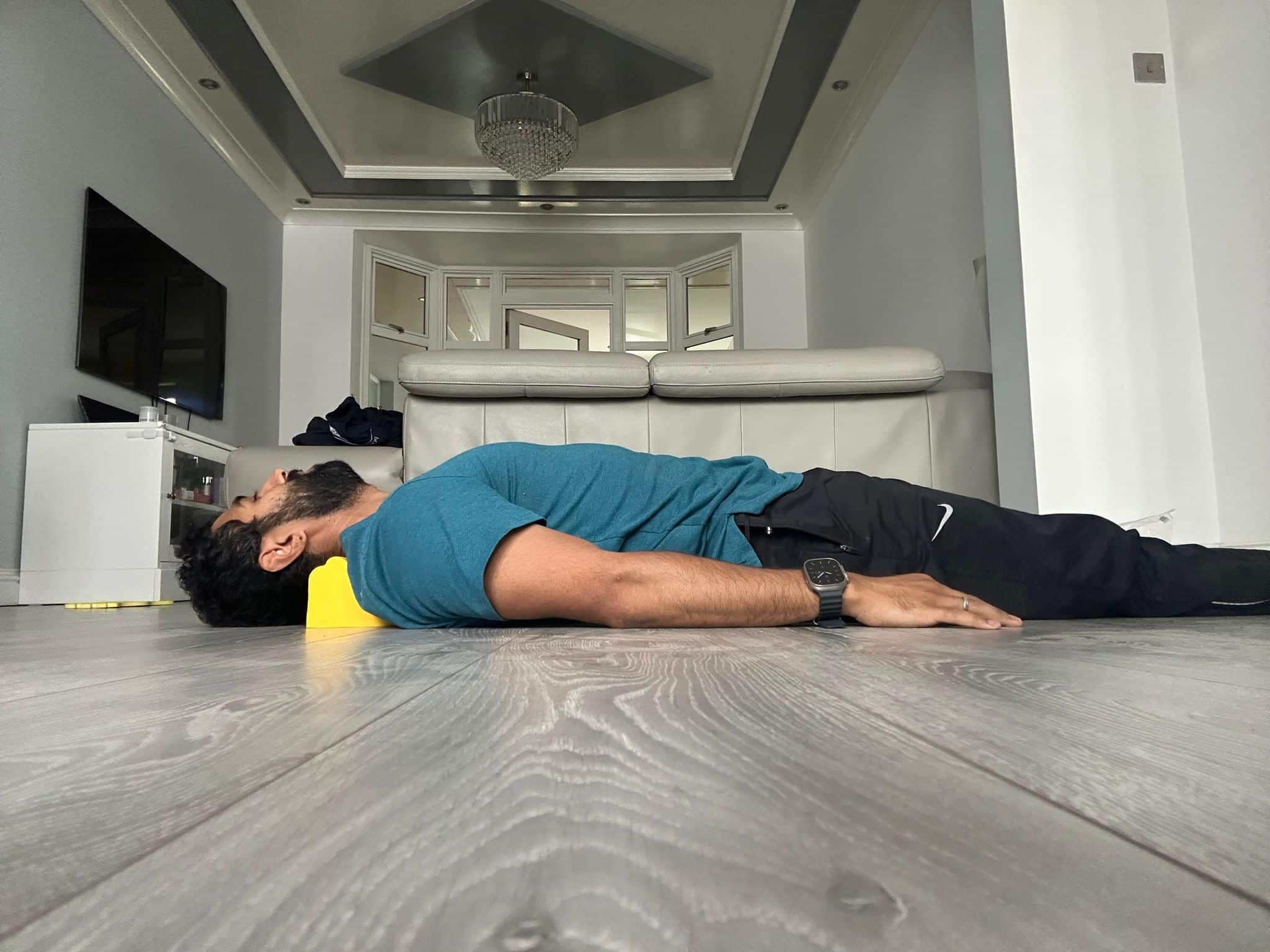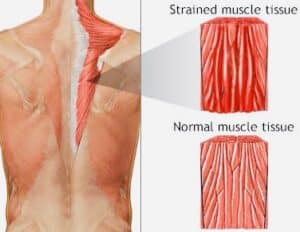
Neck and Shoulder pain
Neck and shoulder pain can be frustrating and limit your day-to-day life. Whether it’s caused by poor posture, stress, or deeper muscular issues, knowing the right exercise for neck and shoulder pain and treatment options can help relieve the discomfort and prevent it from coming back.
At Back to Health Wellness in Guildford, we go beyond surface-level relief. Our expert team of osteopaths, physiotherapists, and massage therapists focus on getting to the root of your pain. We provide hands-on treatment and guide you through customised exercises that improve mobility, reduce pain, and build long-term resilience.
Myofascial Pain Syndrome

Myofascial pain syndrome results in the formation of painful knots throughout the body. These knots lead to localized pain and muscle weakness or stiffness. Patients tend to manage the symptoms with pain relief and physical rehabilitation.
One major cause of neck and shoulder pain is myofascial pain syndrome, which leads to the formation of painful muscle knots. These knots can cause referred pain, tightness, and even restricted movement.
How we treat it better, our massage therapy doesn’t follow a one-size-fits-all approach. After taking a full case history and doing a hands-on examination, we target the specific muscle fibers and fascia involved. Our therapists combine soft tissue release with guided movement to release knots and prevent them from returning.
Changes to the Cervical Disc Vertebrae

Wear and tear or injury can cause changes in the cervical discs. This may result in pain radiating from the neck into the shoulders, arms, or even the head.
Why we’re different: Many clinics stop at recommending general posture advice. We go further. Our team offers personalized exercise plans, posture correction strategies, and spine traction therapy , exercise for neck and shoulder pain. This method gently relieves pressure from the cervical spine, often offering fast relief from disc-related neck pain.
Try this at home: Chin tucks, shoulder blade squeezes, and gentle neck mobility drills can help reduce tension.
Exercise for Neck and Shoulder Pain
The shoulder is a ball and socket joint with a large range of movement. Such a mobile joint tends to be more susceptible to injury.

Strains from overexertion
Tendonitis from overuse
Shoulder joint instability
Dislocation
Collar or upper arm bone fractures
Frozen shoulder
Find out more about spine traction.

Bad Posture
Modern life plays a significant role in the aches and pains we experience.
Sitting with a forward-slumped head and shoulders can misalign the spine and create tension, leading to pain in the head, jaw, neck, and upper back. Make an effort to hold your head and neck upright, and keep the shoulders from turning in towards the body.
Muscle Strain

It’s worth noting that your neck is home to a surprising total of twenty-six muscles, which are essential for enabling you to move, maintain balance, and swallow.
For instance, when sleeping without proper support or straining to view a poorly positioned computer screen, or using an incorrectly adjusted car headrest, it can also contribute to these strains.
Stress and Anxiety
For most people, one of the most common ways stress and anxiety manifest in the body is through physical tension. Consider meditation, massage therapy, and gentle exercise for neck and shoulder pain to relieve anxiety and stress and, hopefully, improve your physical symptoms, too.
Slumping forward with rounded shoulders and a forward head posture can overload the neck and shoulder muscles. This is a common side effect of prolonged desk work or mobile phone use.
How we help: We don’t just tell you to “sit up straight” Instead, we assess your postural habits, educate you on optimal alignment, and work through progressive strengthening exercises for the deep neck flexors, mid-back, and shoulders.
Along with exercises, consider these simple habits to enhance your pain relief-
Ergonomic Setup
Adjust your chair and monitor to reduce strain. Keep your feet flat, your knees at a 90° angle, and your screen at eye level.
Micro‑Breaks
Take a 1–2 minute break every 30 minutes to stretch or move around. This helps release tension in your neck and shoulders.
Mindful Posture
Regularly check your posture: keep your shoulders back and spine straight to avoid unnecessary strain.
Exercise for Neck and Shoulder Pain
Stress and anxiety often show up as physical tension in the neck and shoulders. If this sounds familiar, you’re not alone.
How to manage this-
Diaphragmatic breathing and 4-7-8 breathing techniques
Before or after your exercises, spend 1–2 minutes inhaling slowly through your nose, allowing your abdomen (not your chest) to expand, then exhale fully through your mouth.
Gentle mobility exercises and stretching
Stress-relieving therapies like acupuncture and massage
Combine daily breathing exercises with short walks and mobility stretches to unwind mentally and physically.
Pain Scale Guide
Knowing when to seek help is important. Use this guide to assess your pain level:
Pain 1–3: Try our spine traction and a warm compress.
4–6: Book a massage session.
7–10: You may need osteopathy or shockwave therapy — contact us for a professional assessment.
Incorporating targeted exercises for neck and shoulder pain into your daily routine can make a dramatic difference in how you feel and move.
By strengthening key muscles, improving posture, and increasing mobility, you’ll not only relieve current discomfort but also reduce your risk of future aches.
Start with the simple routines outlined here, stay consistent, and listen to your body’s feedback. If you need personalized guidance or hands‑on support, don’t hesitate to reach out and book a free assessment. Here’s to a stronger, more resilient you—pain‑free and ready for whatever the day brings!

